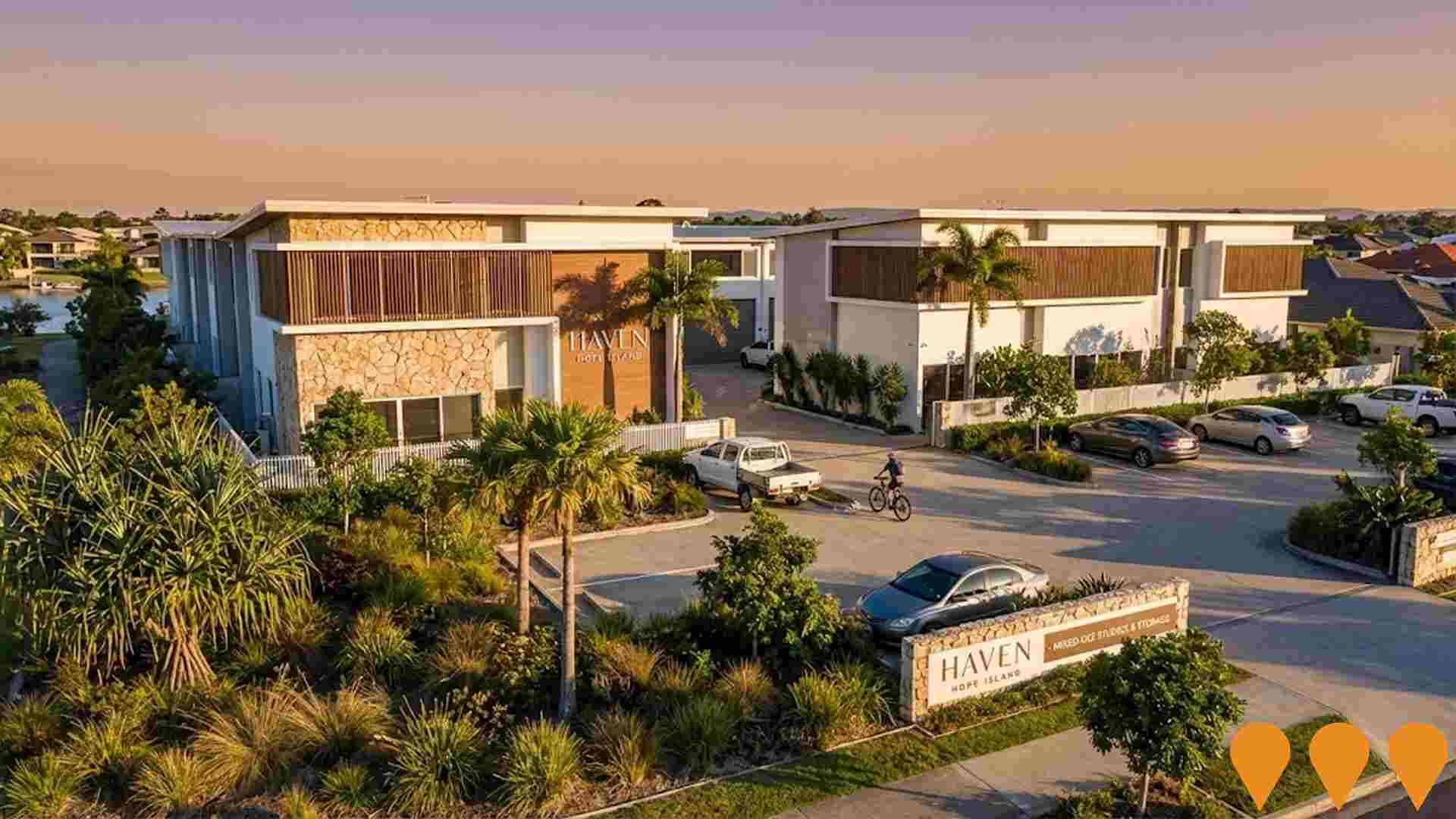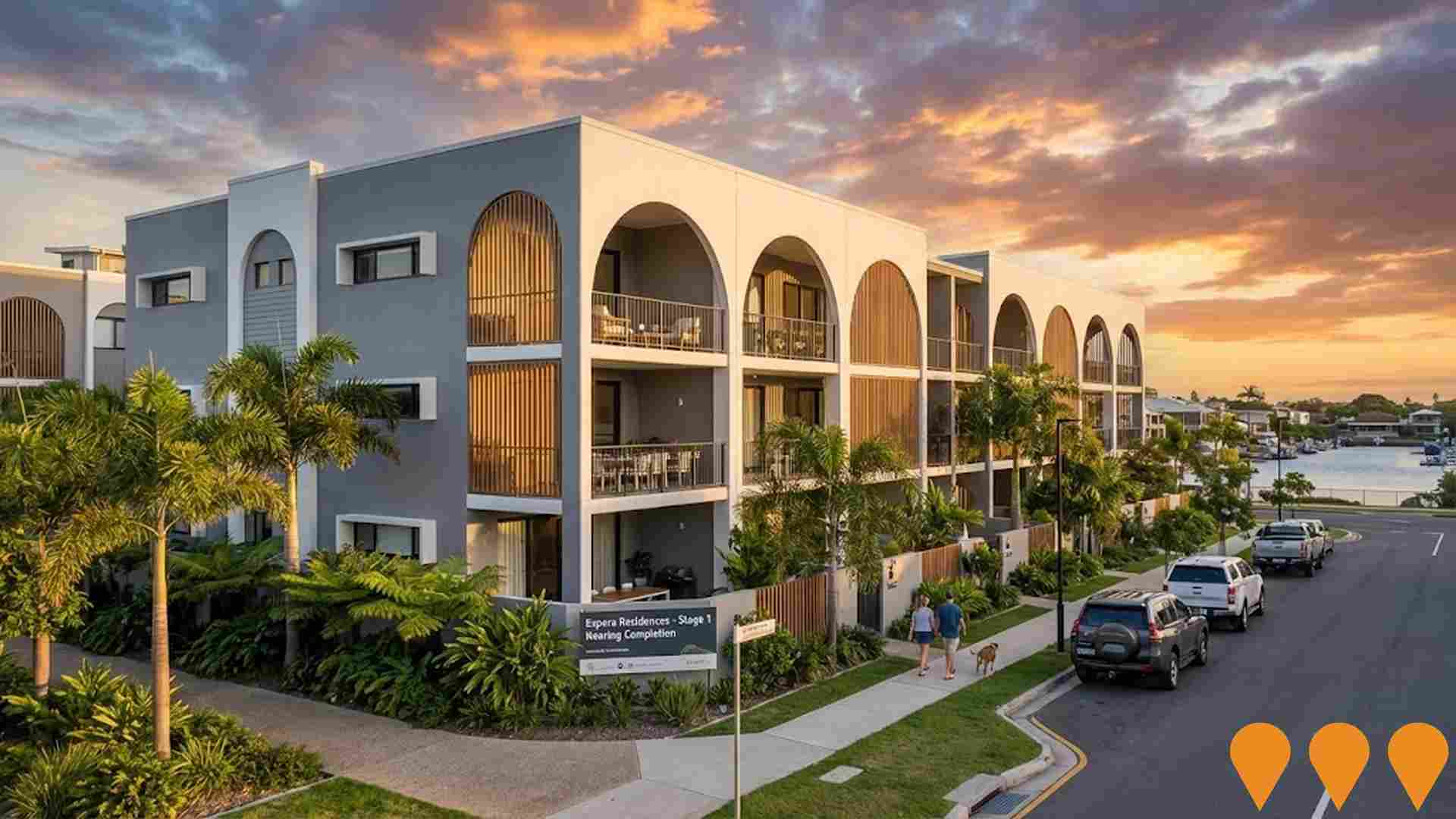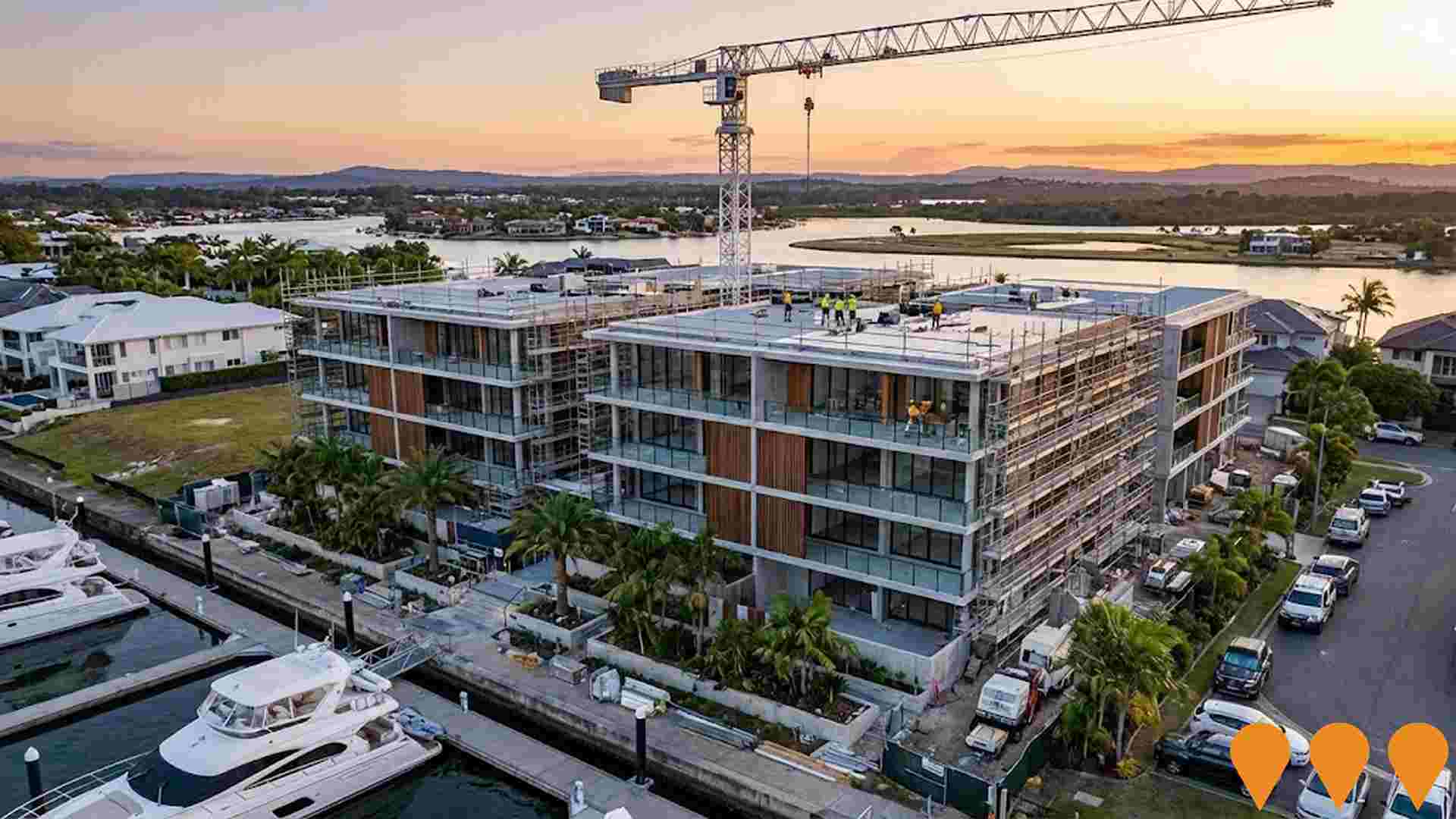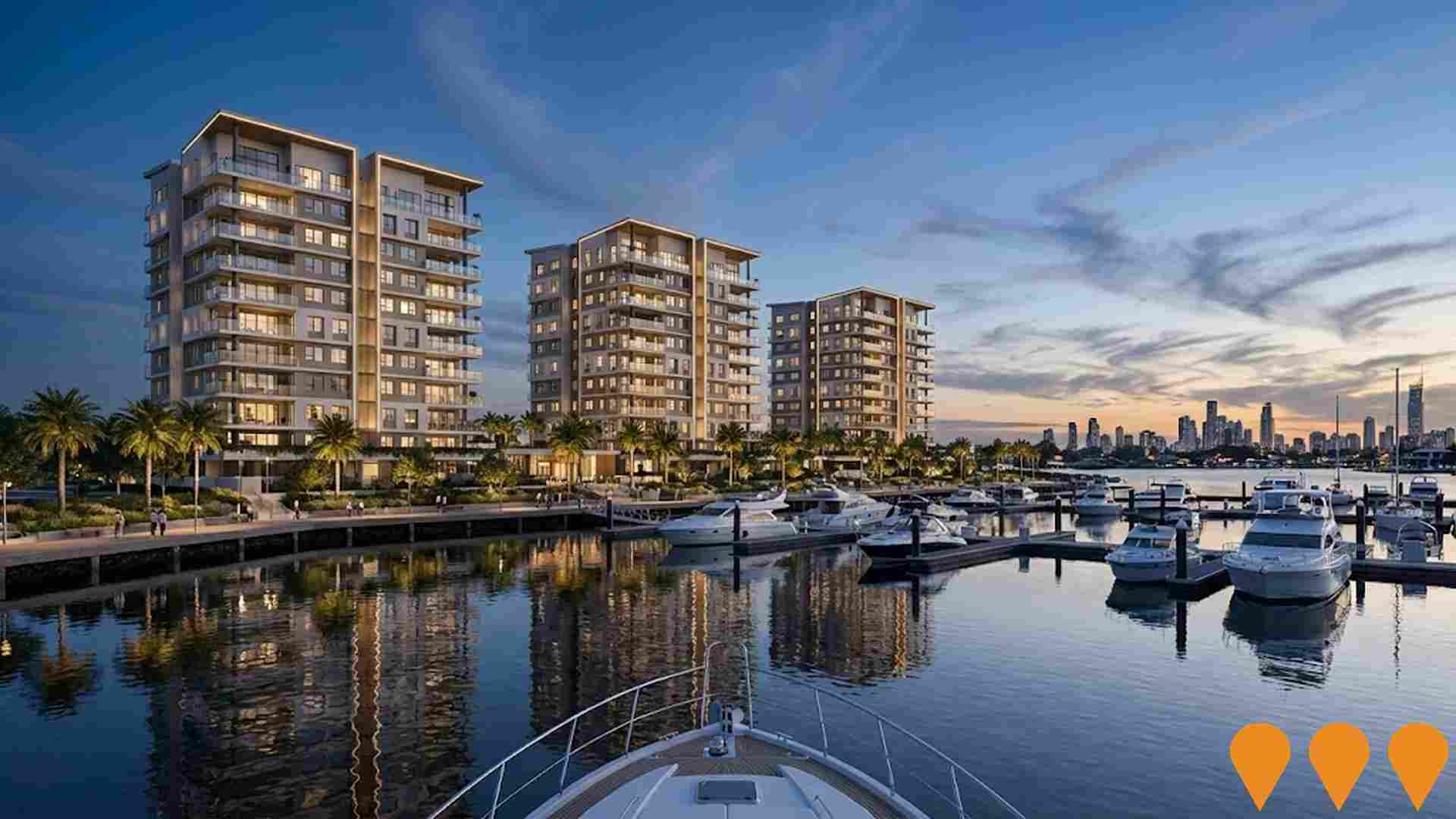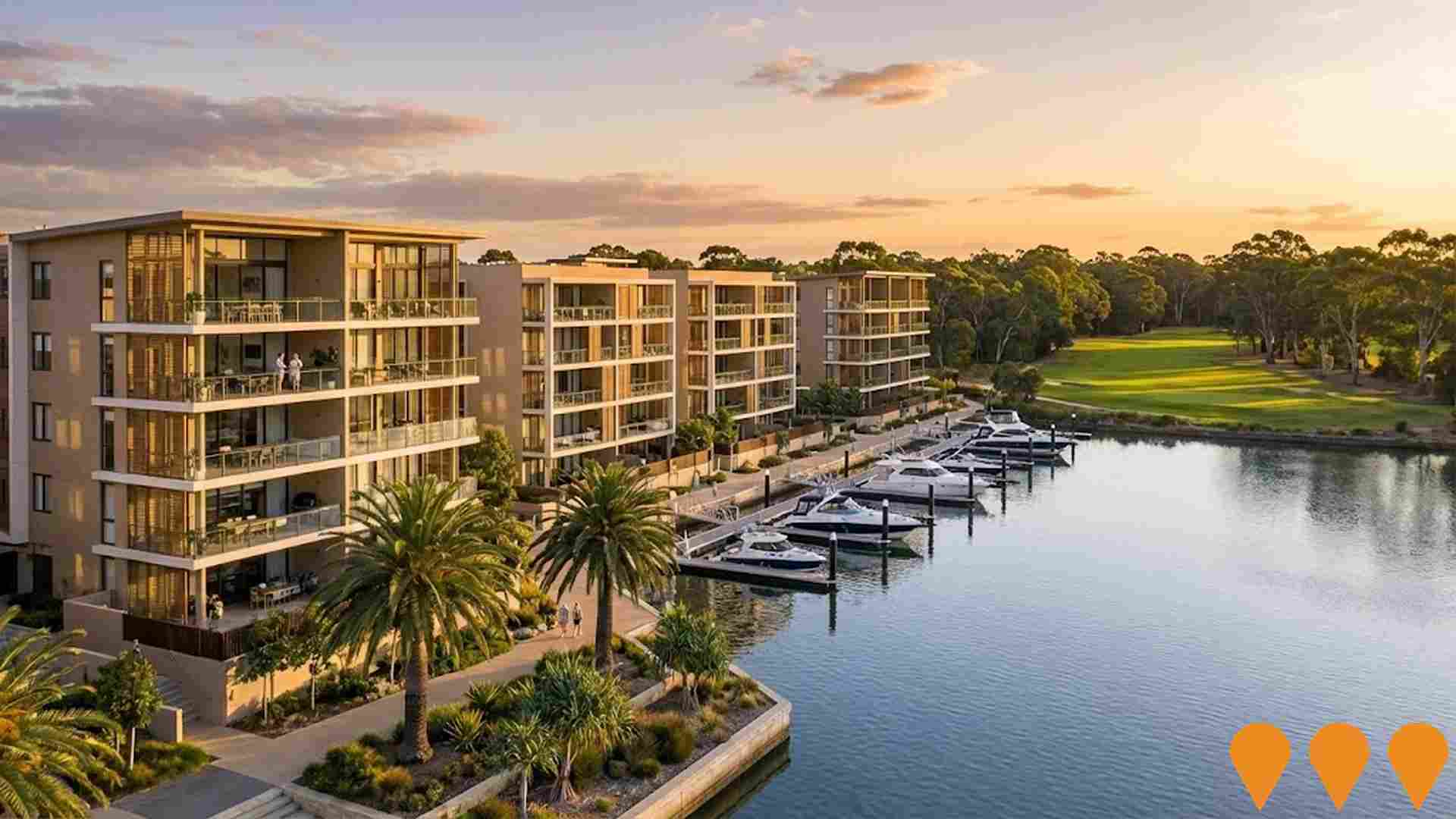Chart Color Schemes
est. as @ -- *
ABS ERP | -- people | --
2021 Census | -- people
Sales Activity
Curious about local property values? Filter the chart to assess the volume and appreciation (including resales) trends and regional comparisons, or scroll to the map below view this information at an individual property level.
Find a Recent Sale
Sales Detail
Population
Hope Island lies within the top 10% of areas nationally in terms of population growth performance according to AreaSearch analysis of short and medium-term trends
Hope Island's population was around 18,383 as of November 2025, according to AreaSearch's analysis. This figure represents an increase of 3,718 people from the 2021 Census count of 14,665 individuals. The growth is inferred from ABS data showing an estimated resident population of 17,592 in June 2024 and an additional 1,157 validated new addresses since the Census date. This results in a population density ratio of 329 persons per square kilometer. Hope Island's population grew by 25.4% between the 2021 Census and November 2025, surpassing both the non-metro area growth rate (8.8%) and the national average. Interstate migration contributed approximately 69.5% of overall population gains during recent periods.
AreaSearch uses ABS/Geoscience Australia projections for each SA2 area released in 2024 with a base year of 2022, and Queensland State Government's SA2 area projections released in 2023 based on 2021 data for areas not covered by ABS projections or years post-2032. Future population trends forecast a significant increase in the top quartile of national regional areas, with Hope Island expected to grow by 7,619 persons to reach approximately 26,004 individuals by 2041, reflecting an overall increase of 37.1% over the 17-year period.
Frequently Asked Questions - Population
Development
The level of residential development activity in Hope Island was found to be higher than 90% of real estate markets across the country
Hope Island has received approximately 418 dwelling approvals annually over the past five financial years, totalling 2,091 homes. As of FY-26, 29 dwellings have been approved. On average, 1.9 people have moved to the area per dwelling built each year between FY-21 and FY-25, indicating a balanced supply and demand market with stable conditions. The average construction cost value for new homes is $478,000, which is somewhat higher than regional norms due to quality-focused development.
This financial year has seen $15.0 million in commercial development approvals, demonstrating moderate levels of commercial activity. Compared to the Rest of Qld, Hope Island records 190.0% more new home approvals per person, offering buyers greater choice. However, building activity has slowed in recent years. This level is significantly above the national average, indicating robust developer interest in the area. New building activity comprises 14.0% standalone homes and 86.0% medium to high-density housing, creating more affordable entry points and suiting downsizers, investors, and first-home buyers. This represents a notable shift from the current housing mix of 60.0% houses, indicating decreasing availability of developable sites and reflecting changing lifestyles and demand for diverse, affordable housing options. With around 53 people moving to Hope Island per dwelling approval, it shows characteristics of a growth area.
Future projections estimate an addition of 6,828 residents by 2041. Given current construction levels, housing supply should adequately meet demand, creating favourable conditions for buyers while potentially enabling growth that exceeds current forecasts.
Frequently Asked Questions - Development
Infrastructure
Hope Island has strong levels of nearby infrastructure activity, ranking in the top 30% nationally
Changes in local infrastructure significantly affect an area's performance. AreaSearch has identified 116 projects that may impact the region. Notable projects include Hope Island Railway Station (Cross River Rail), Saffron at Links Hope Island, Marina Point Apartments, and Espera Residences. The following list details those likely to be most relevant.
Professional plan users can use the search below to filter and access additional projects.
INFRASTRUCTURE SEARCH
 Denotes AI-based impression for illustrative purposes only, not to be taken as definitive under any circumstances. Please follow links and conduct other investigations from the project's source for actual imagery. Developers and project owners wishing us to use original imagery please Contact Us and we will do so.
Denotes AI-based impression for illustrative purposes only, not to be taken as definitive under any circumstances. Please follow links and conduct other investigations from the project's source for actual imagery. Developers and project owners wishing us to use original imagery please Contact Us and we will do so.
Frequently Asked Questions - Infrastructure
Harvey Norman Homeworld Helensvale Expansion
Expansion of the existing Homeworld Helensvale bulky goods centre with a new 10,025 sqm single-storey Harvey Norman showroom and approximately 250 additional car parking spaces.
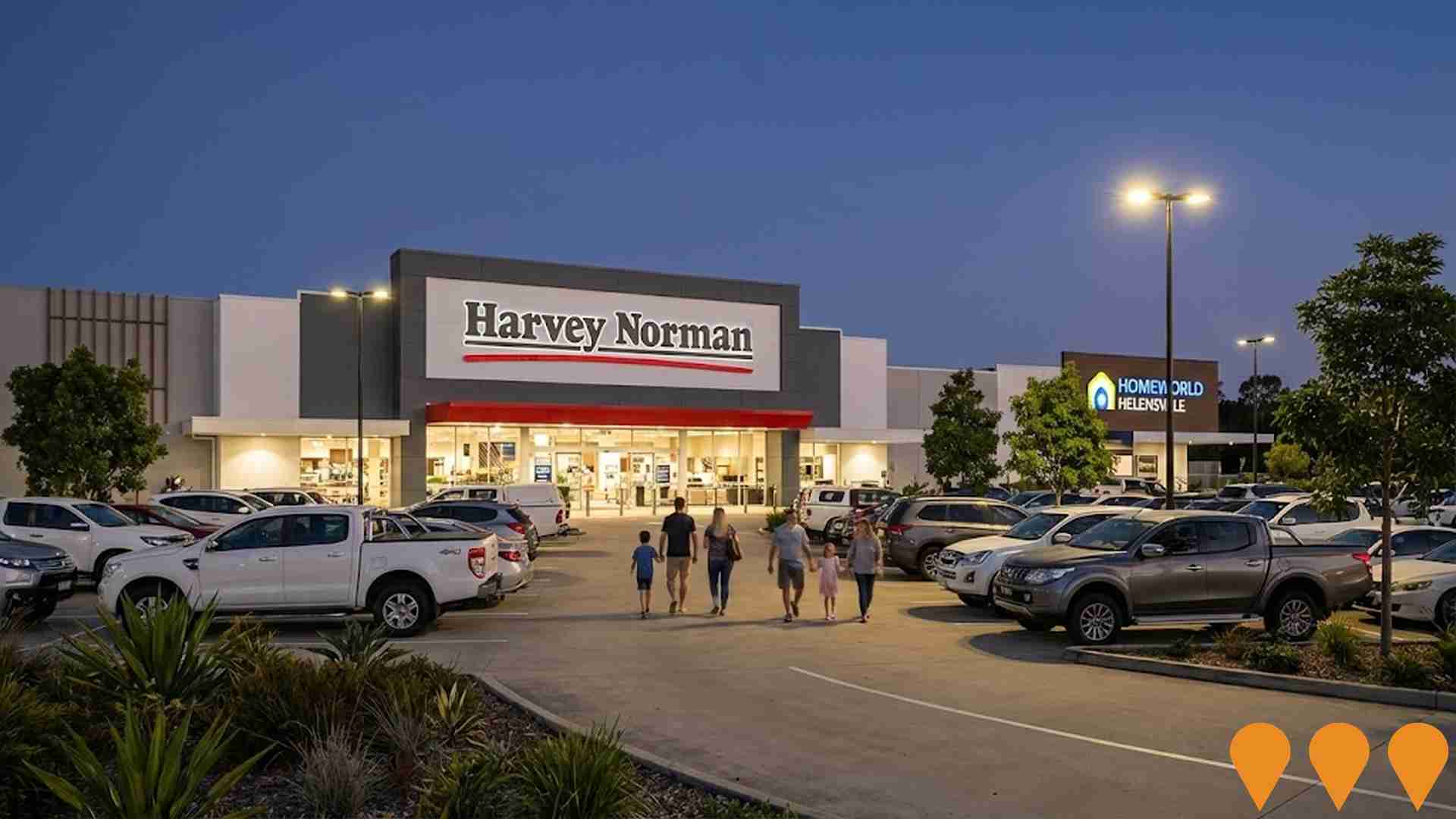
Coomera Urban Village Stage 3
Mixed-use development comprising 720 apartments across four towers (16-25 storeys) designed by Archidiom. Two of the buildings will be build to rent. The development includes a retail precinct with restaurants, commercial space, a gym, and a medical centre with 4,350 sqm of communal recreation facilities including pools, terraces, and community spaces. The project sits above four basement levels with approximately 1,300 parking spaces.
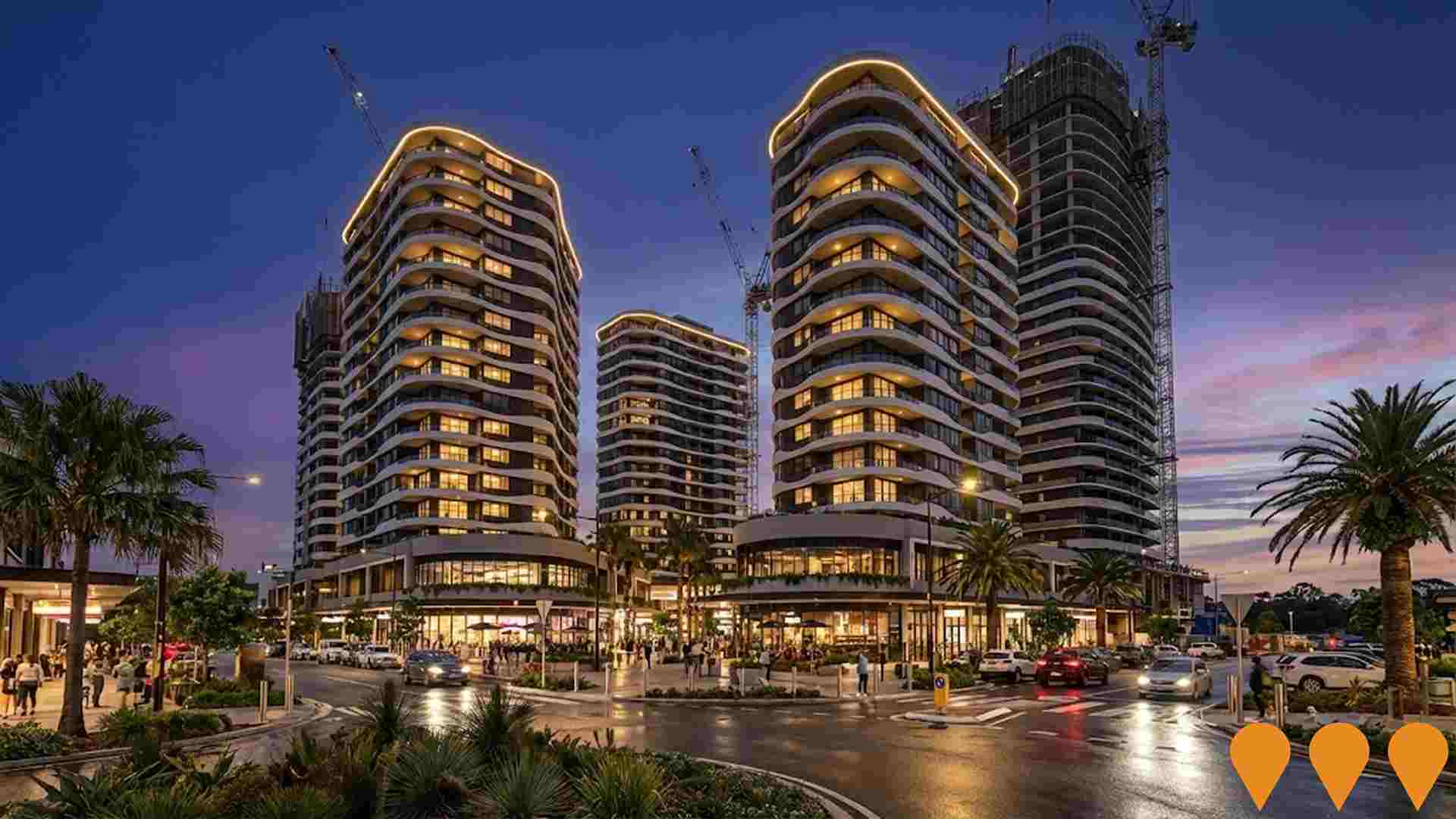
Hope Island Railway Station (Cross River Rail)
A new station on the Gold Coast Line to serve the growing communities of Hope Island, Helensvale, and Oxenford. The project includes two platforms, lifts, a signalised intersection on Hope Island Road, and approximately 210 car parks. It also features accessible facilities, bus connections, and bicycle storage. Major construction is underway and is expected to be completed in 2026, followed by a testing and commissioning phase.
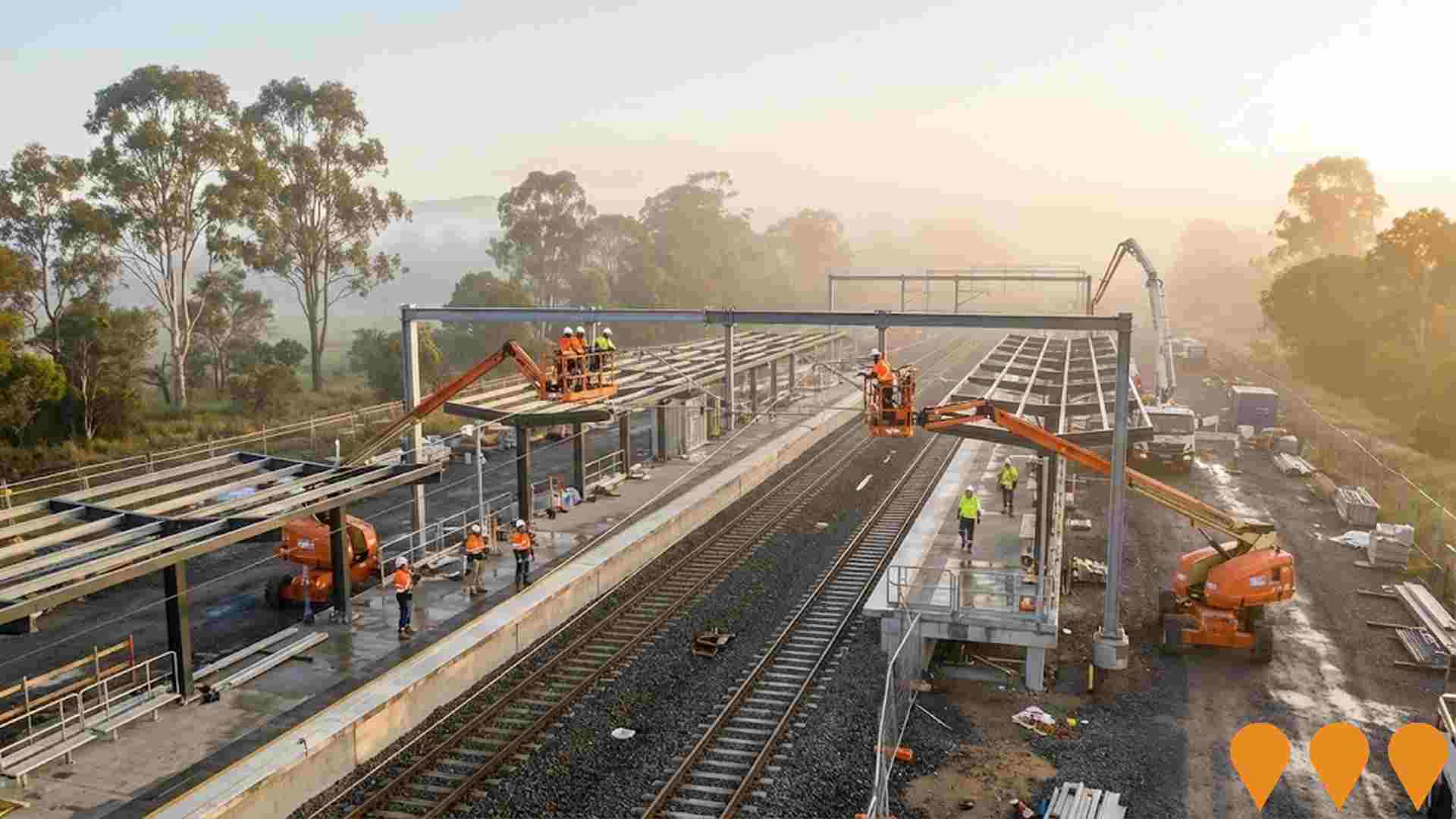
Links Hope Island Resort Master Plan
Comprehensive master plan for Links Golf & Wellbeing transformation including clubhouse upgrades, wellness center, 25-meter heated pool, fitness facilities, medical consultation rooms, and enhanced golf course amenities.
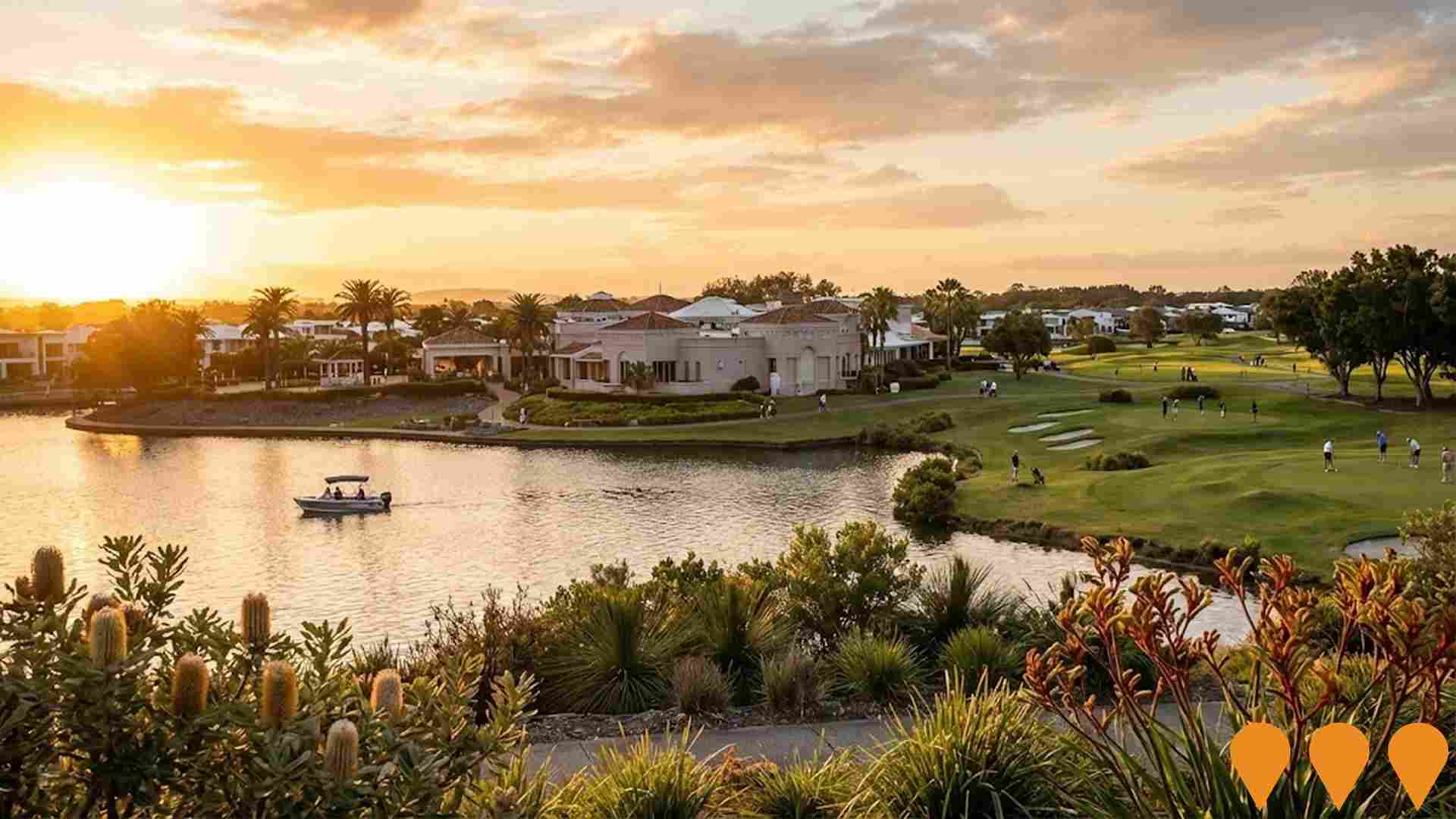
New Gold Coast Railway Stations
New railway stations and upgrades along the Gold Coast railway line to support growing population. Features modern facilities, accessibility features, and improved connectivity.
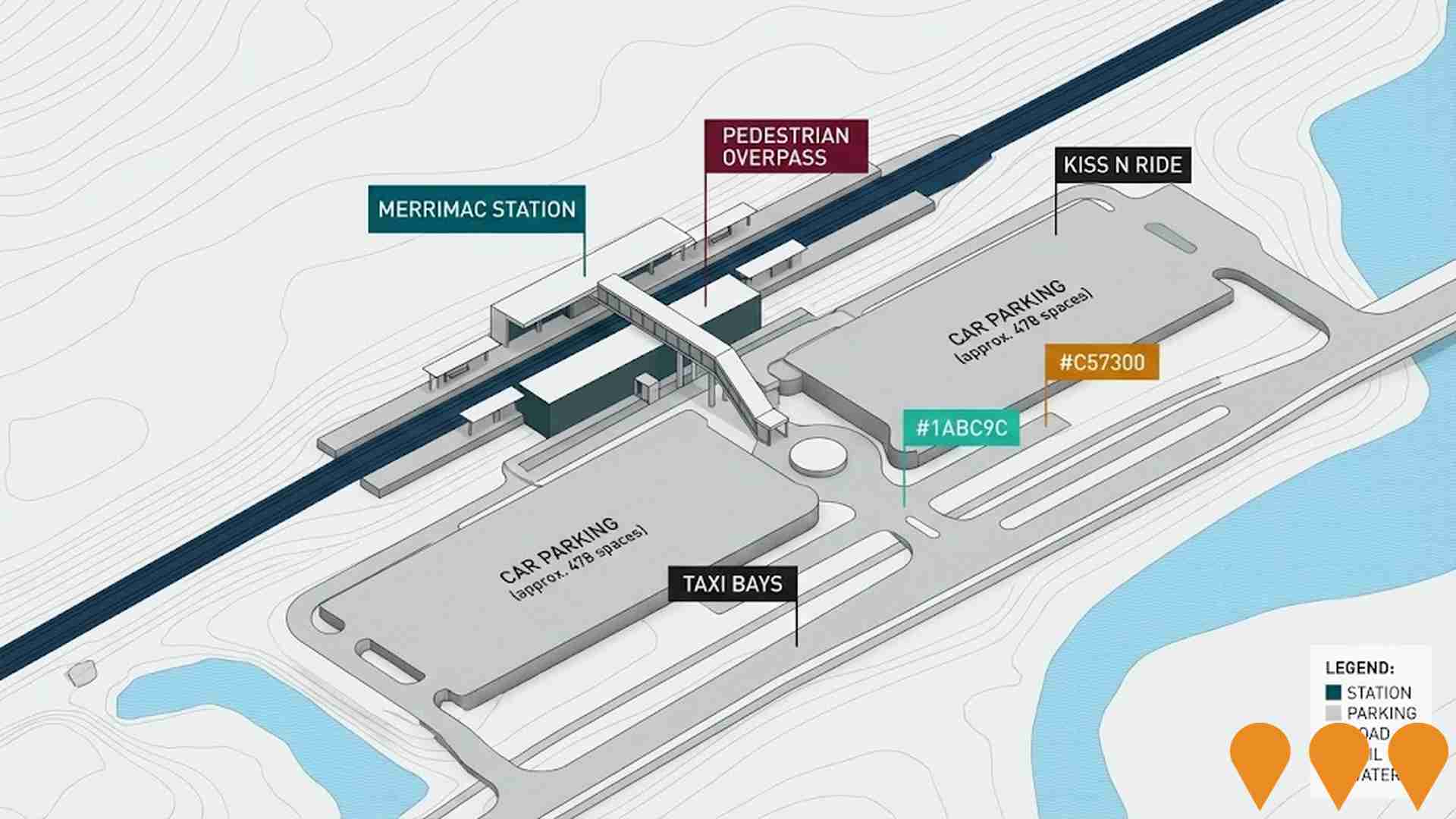
Fairways Land Development
Development of 110 land lots in Sanctuary Cove, representing the last parcel under Stage 1 residential cap. Construction commenced March 2025 with Stage One lots scheduled for release late 2025 to early 2026. This gated residential development enhances the luxury master-planned community with premium residential opportunities within the prestigious Sanctuary Cove resort environment.
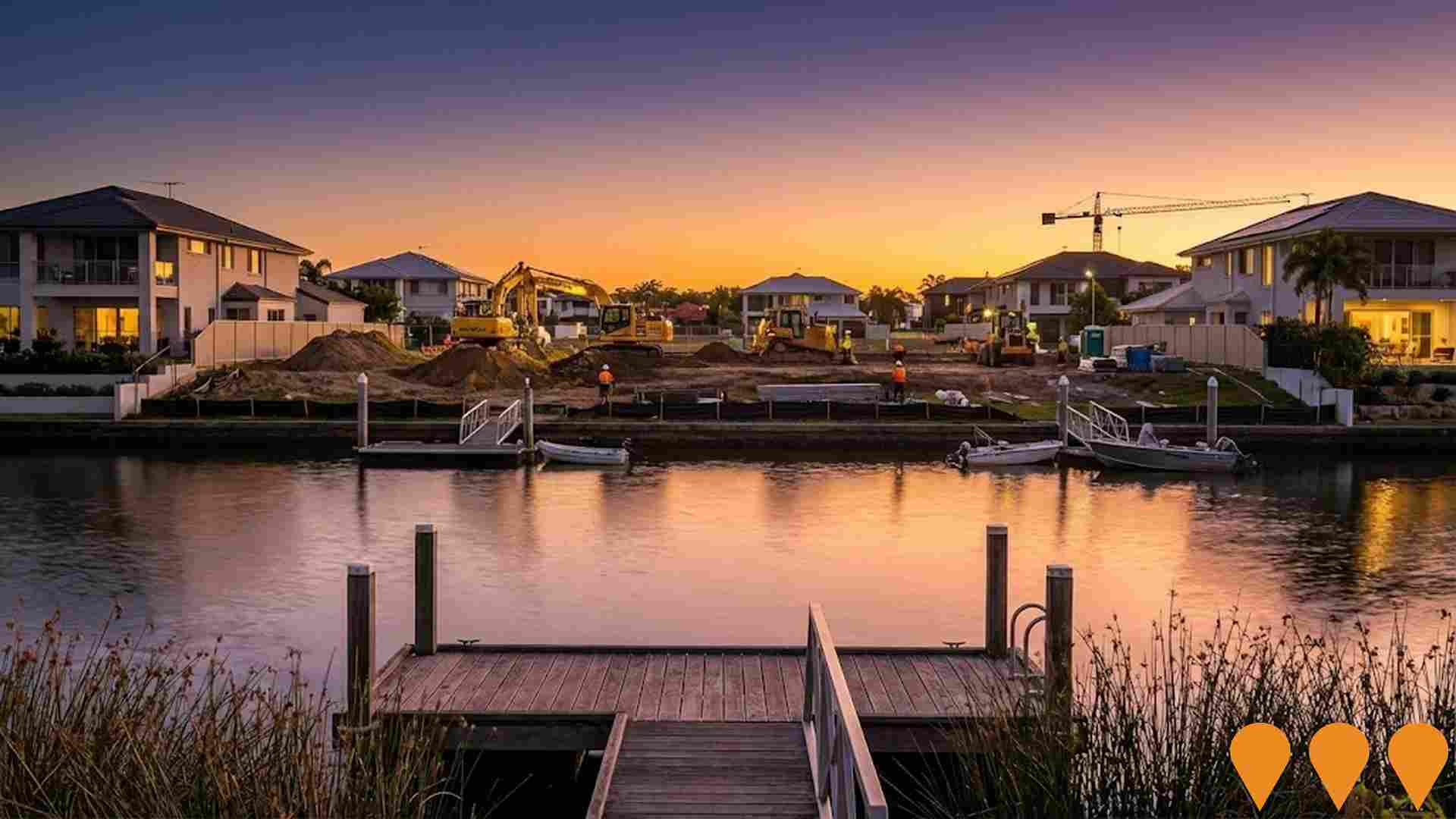
Saffron at Links Hope Island
Premium waterside development with 26 modern waterfront and garden 3-bedroom luxury villas in a gated community at Links Hope Island Resort. Located beside the #1 Public access 18-hole championship golf course on the Gold Coast.
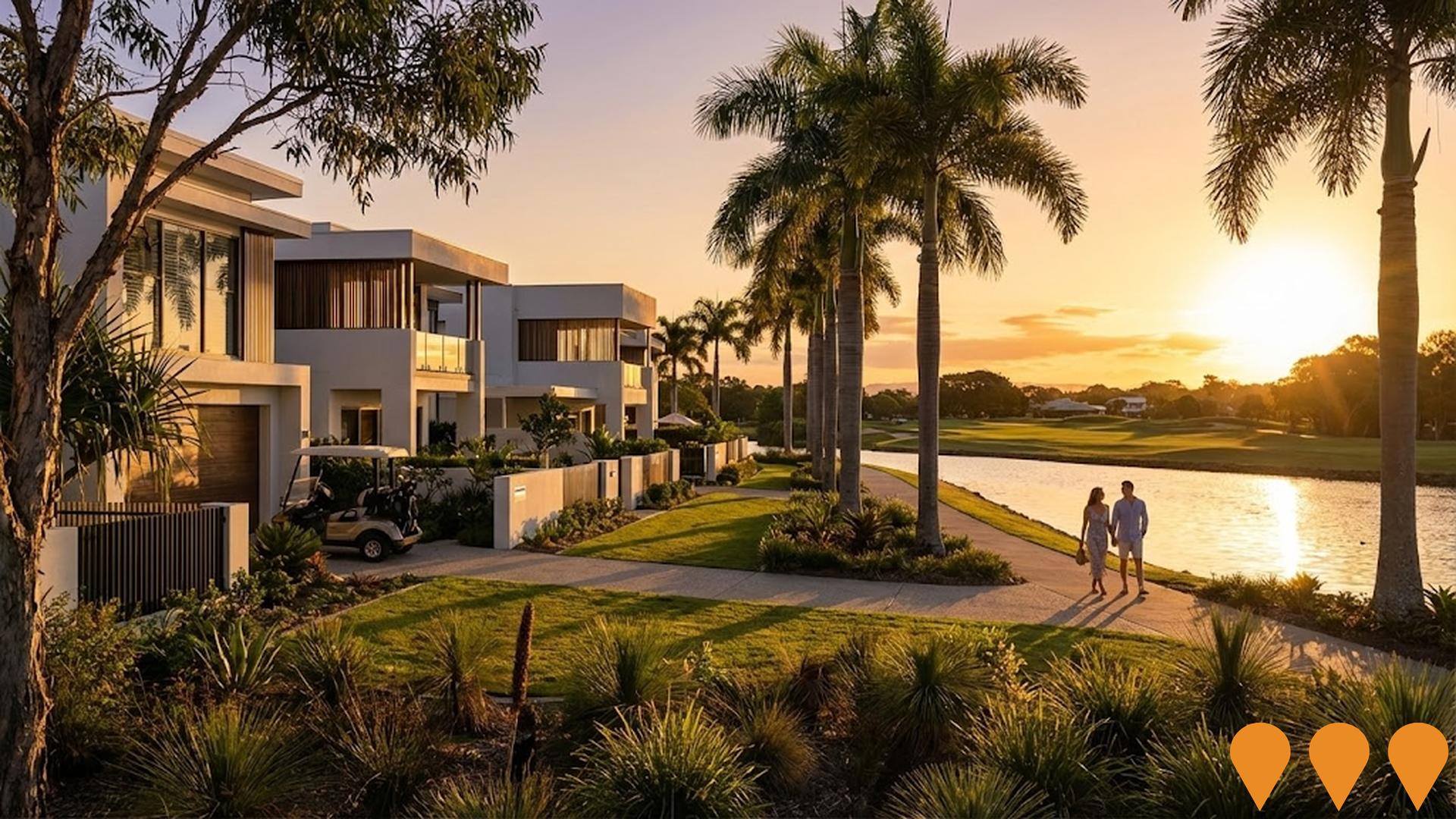
Marina Point Apartments
Four-tower waterfront residential precinct at the Coomera River junction delivering 199 apartments across 3 to 9 levels with extensive resort-style amenities (25m lap pool, lagoon pool, gym, yoga room, sauna, spa, golf simulator, putting green, residents lounge, marina berths up to 25m, and secure parking). Stage 1 is under active construction and reported as 75% sold; Stage 2 (58 apartments) has been launched to market. Display/showroom operations reference both 63 View Line Terrace (onsite showroom) and 72 View Line Terrace (display address in some listings). Targeted completion for Stage 1 reported in 2026.
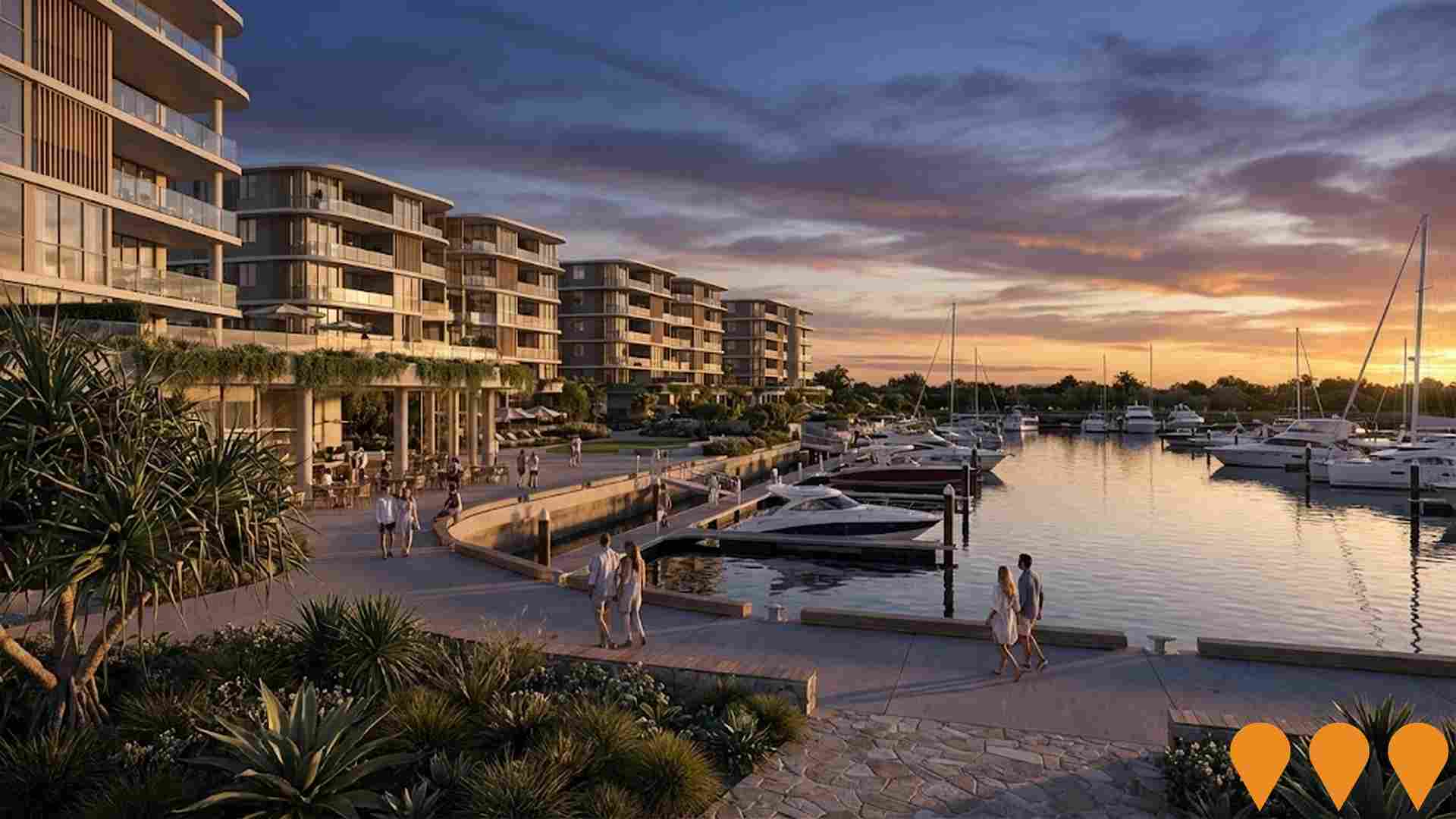
Employment
AreaSearch analysis places Hope Island well above average for employment performance across multiple indicators
Hope Island's workforce is skilled and diverse. The unemployment rate was 2.2% in the past year, with an estimated employment growth of 1.8%.
As of June 2025, 8,765 residents were employed, with an unemployment rate of 1.7%, below Rest of Qld's 3.9%. Workforce participation was 55.1%, compared to Rest of Qld's 59.1%. Key industries included health care & social assistance, construction, and retail trade. Professional & technical services had a high representation, at 1.8 times the regional level.
Conversely, health care & social assistance showed lower representation at 12.1% versus the regional average of 16.1%. The area may offer limited local employment opportunities, as indicated by Census data comparing working population to resident population. Between June 2024 and June 2025, employment levels increased by 1.8%, labour force grew by 2.1%, causing the unemployment rate to rise by 0.3 percentage points. In Rest of Qld, employment rose by 1.8%, labour force grew by 2.0%, and unemployment rose by 0.2 percentage points. Jobs and Skills Australia's national employment forecasts from May 2025 project a 6.6% increase over five years and 13.7% over ten years. Applying these projections to Hope Island's employment mix suggests local growth of approximately 6.6%% over five years and 13.4% over ten years, though this is an illustrative extrapolation and does not account for localised population projections.
Frequently Asked Questions - Employment
Income
The economic profile demonstrates above-average performance, with income metrics exceeding national benchmarks based on AreaSearch comparative assessment
AreaSearch's aggregation of latest postcode level ATO data released for financial year 2022 shows Hope Island had a median taxpayer income of $52,572 and an average income of $76,057. Nationally, these figures are high compared to the median of $50,780 and average of $64,844 in Rest of Qld. Based on Wage Price Index growth of 13.99% since financial year 2022, estimated incomes as of September 2025 would be approximately $59,927 (median) and $86,697 (average). According to Census 2021 income data, Hope Island's household, family, and personal incomes cluster around the 61st percentile nationally. The largest segment comprises 30.8% earning $1,500 - $2,999 weekly, with 5,661 residents in this range. This pattern is similar to the surrounding region where 31.7% occupy this income range. High housing costs consume 16.1% of income, but strong earnings place disposable income at the 61st percentile nationally. The area's SEIFA income ranking places it in the 7th decile.
Frequently Asked Questions - Income
Housing
Hope Island displays a diverse mix of dwelling types, with above-average rates of outright home ownership
Dwelling structure in Hope Island, as evaluated at the latest Census, comprised 60.4% houses and 39.6% other dwellings. In comparison, Non-Metro Qld had 80.5% houses and 19.4% other dwellings. Home ownership in Hope Island was 41.4%, with mortgaged dwellings at 30.8% and rented ones at 27.9%. The median monthly mortgage repayment in the area was $2,200, higher than Non-Metro Qld's average of $2,000. Median weekly rent in Hope Island was $550, compared to Non-Metro Qld's $450. Nationally, Hope Island's median mortgage repayment is significantly higher at $1,863 and rents are substantially above the national figure of $375.
Frequently Asked Questions - Housing
Household Composition
Hope Island features high concentrations of family households, with a lower-than-average median household size
Family households constitute 77.7% of all households, including 25.9% couples with children, 42.5% couples without children, and 8.5% single parent families. Non-family households account for the remaining 22.3%, with lone person households at 19.1% and group households comprising 3.2% of the total. The median household size is 2.4 people, which is smaller than the Rest of Qld average of 2.9.
Frequently Asked Questions - Households
Local Schools & Education
Educational attainment in Hope Island aligns closely with national averages, showing typical qualification patterns and performance metrics
The area's educational profile is notable regionally, with university qualification rates at 27.0% of residents aged 15+, surpassing the Rest of Qld average of 20.6%. This figure also exceeds that of the SA3 area (20.7%), indicating a strong emphasis on higher education in the community. Bachelor degrees are the most prevalent, with 18.4%, followed by postgraduate qualifications at 6.4% and graduate diplomas at 2.2%.
Vocational credentials are prominent among residents aged 15+, with 37.2% holding such qualifications, including advanced diplomas (14.2%) and certificates (23.0%). Educational participation is high, with 25.0% of residents currently enrolled in formal education. This includes 7.8% in primary education, 7.2% in secondary education, and 5.2% pursuing tertiary education. Educational facilities appear to be located outside the immediate catchment boundaries, requiring families to access schools in neighboring areas.
Frequently Asked Questions - Education
Schools Detail
Nearby Services & Amenities
Transport
Transport servicing is very low compared to other areas nationally based on assessment of service frequency, route connectivity and accessibility
Transport analysis shows 14 active stops operating within Hope Island. These stops serve a mix of bus routes. Two individual routes service these stops, collectively providing 250 weekly passenger trips.
Transport accessibility is rated as limited, with residents typically located 830 meters from the nearest stop. Service frequency averages 35 trips per day across all routes, equating to approximately 17 weekly trips per stop.
Frequently Asked Questions - Transport
Transport Stops Detail
Health
Health outcomes in Hope Island are marginally below the national average with common health conditions slightly more prevalent than average across both younger and older age cohorts
Health indicators suggest below-average outcomes in Hope Island, with common health conditions slightly more prevalent than average across both younger and older age cohorts. The rate of private health cover is very high at approximately 57% of the total population (~10,496 people), compared to 52.3% across Rest of Qld.
The most common medical conditions in the area are arthritis and asthma, impacting 9.2 and 6.1% of residents respectively. 68.3% of residents declared themselves completely clear of medical ailments, compared to 71.6% across Rest of Qld. As of June 2021, 27.1% of residents are aged 65 and over (4,974 people), which is higher than the 12.0% in Rest of Qld. Health outcomes among seniors are particularly strong, performing even better than the general population in health metrics.
Frequently Asked Questions - Health
Cultural Diversity
Hope Island was found to be more culturally diverse than the vast majority of local markets in Australia, upon assessment of a range of language and cultural background related metrics
Hope Island's population showed higher cultural diversity than most local markets, with 12.6% speaking a language other than English at home and 37.6% born overseas. Christianity was the predominant religion, accounting for 56.7%. Judaism, at 0.4%, was overrepresented compared to Rest of Qld's 0.1%.
In terms of ancestry, the top three groups were English (33.4%), Australian (20.0%), and Scottish (8.3%). Some ethnic groups showed notable differences: South African (1.4% vs regional 1.0%), New Zealand (1.3% vs 1.9%), and Russian (0.6% vs 0.3%) were overrepresented in Hope Island.
Frequently Asked Questions - Diversity
Age
Hope Island ranks among the oldest 10% of areas nationwide
Hope Island's median age of 49 is notably higher than Queensland's average of 41 and exceeds the national average of 38. The population aged 65-74 years is particularly prominent at 14.5%, compared to 9.4% nationally and a smaller proportion, 8.7%, are aged 5-14 years. Between 2021 and present, the 15-24 age group has increased from 9.6% to 11.3%, while the 25-34 cohort rose from 8.5% to 10.1%. Conversely, the 65-74 age group decreased from 16.1% to 14.5% and the 45-54 group fell from 14.5% to 13.2%. By 2041, Hope Island's population is projected to see significant shifts in its age composition, with the 25-34 age group expected to grow by 60%, reaching 2,978 people from 1,862.

